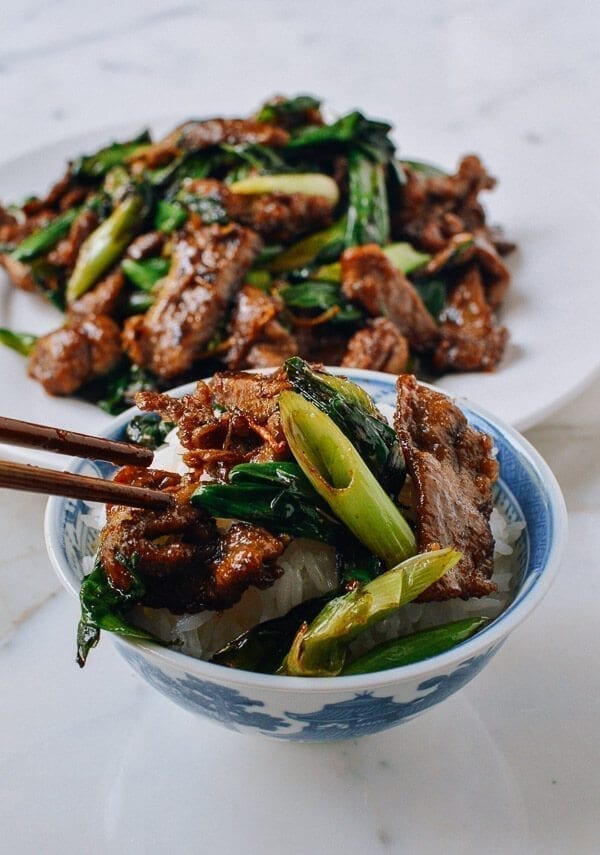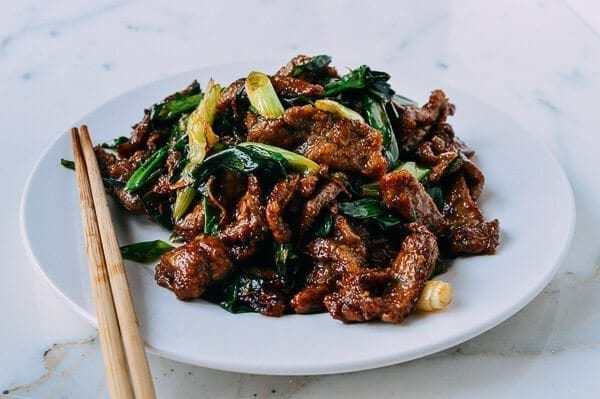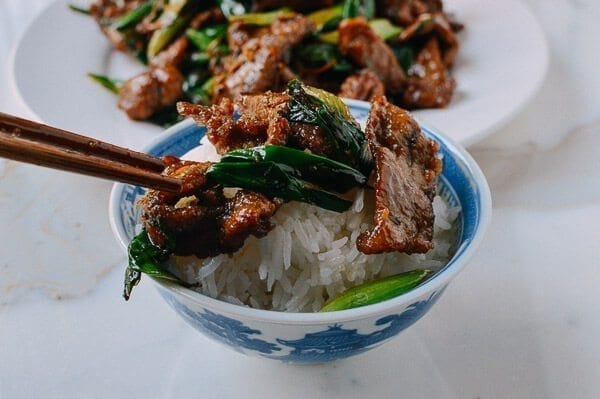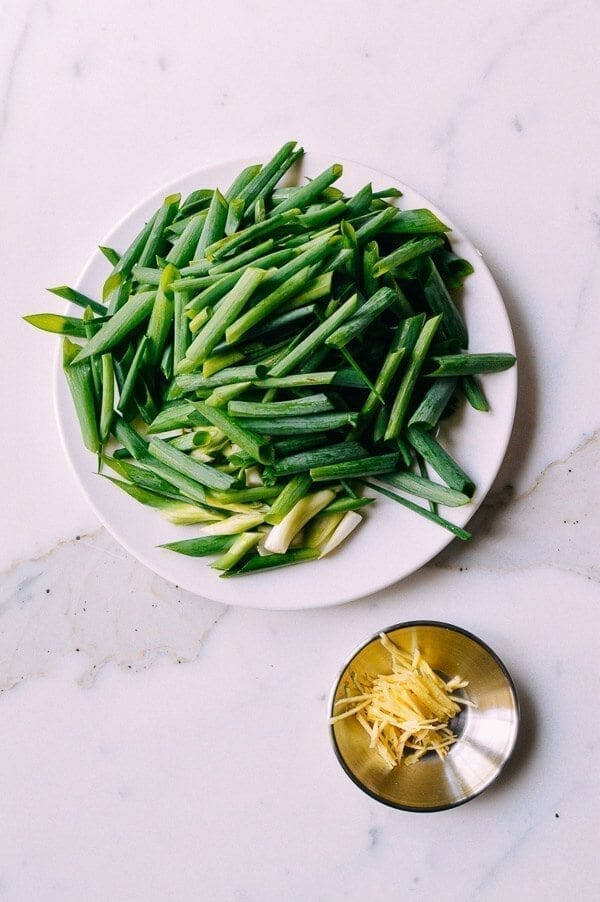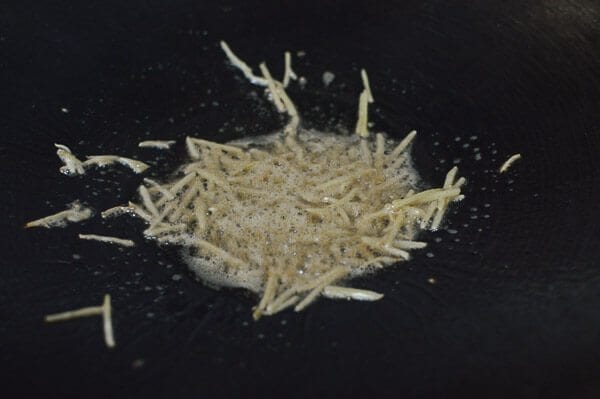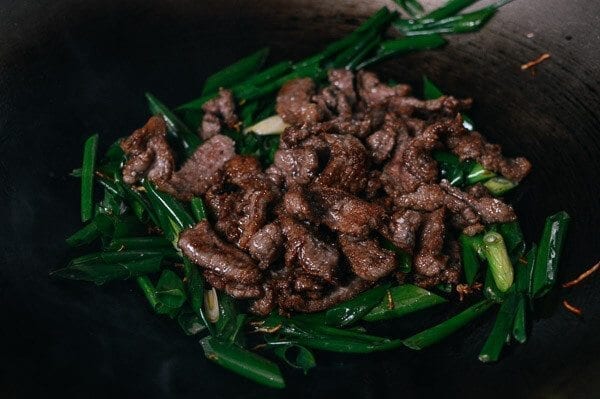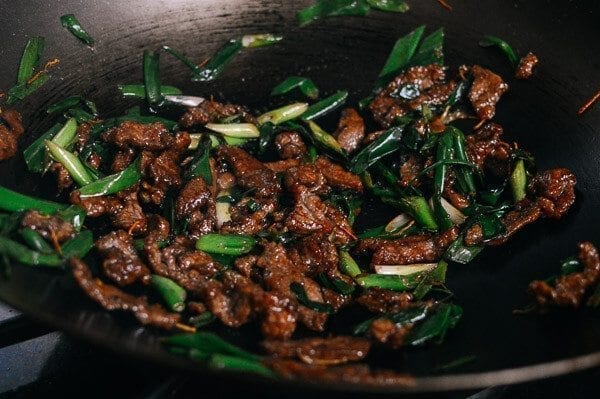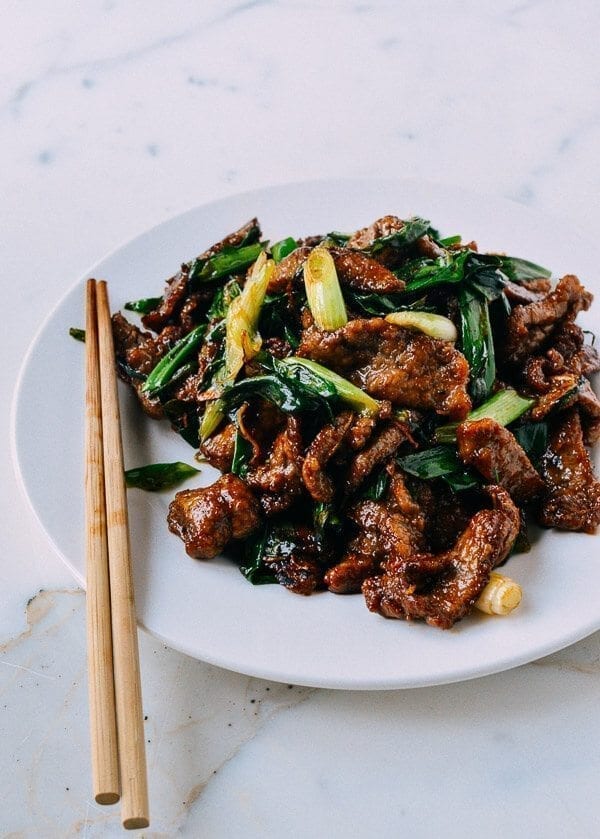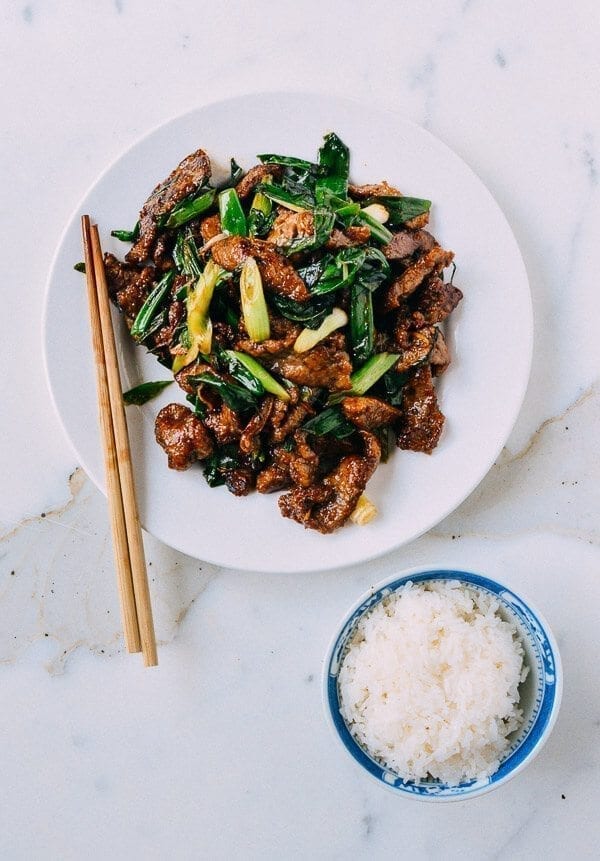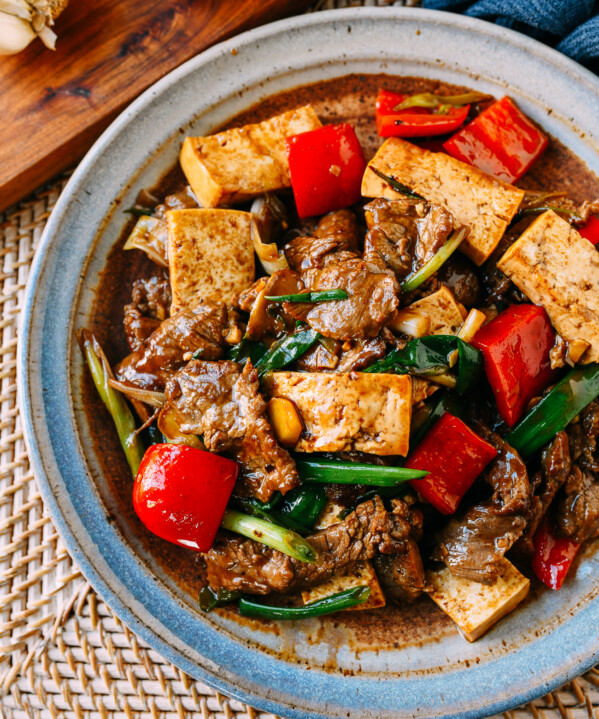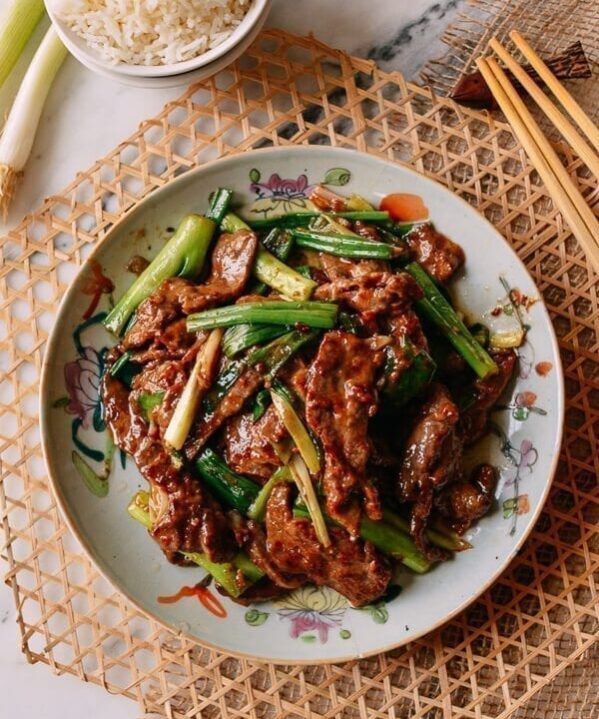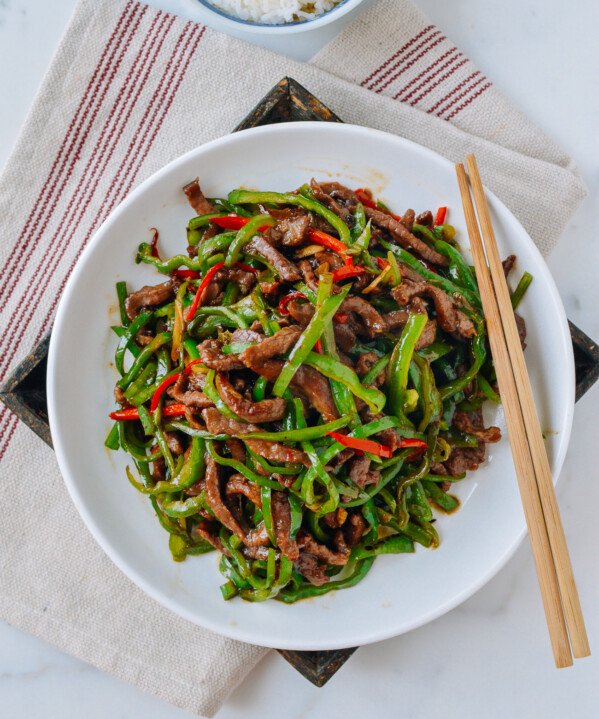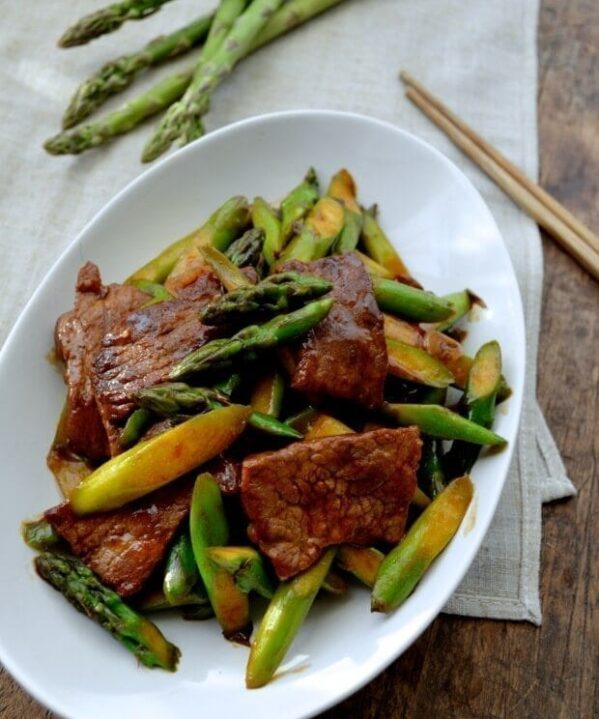Scallion beef stir-fry, pronounced cong bao ngau in Cantonese and cong bao niu (葱爆牛) in Mandarin, is an old favorite dish of mine that, in my humble opinion, most recipes and restaurants don’t really get right. It’s a great dish, and some good “wok hay” from a trusty carbon steel wok makes all the difference.
Alas, even some restaurants in Chinatown don’t cook this dish right, and instead you get a bit of a soggy and oily dish where you know the person behind the wok was just going through the motions. Judy’s father, a retired construction worker, found a place that used to do this beef stir-fry justice, and he went there every day for lunch whenever he worked in the area.
My father’s last restaurant actually did not have scallion beef on the menu, but he cooked it frequently for dinner for us after the place closed. (I miss his version of this iconic scallion beef stir-fry dish, but, believe me, I don’t miss the long hours at the old restaurant.)
There are plenty of recipes out there featuring pictures of a saucy dish with bright scallions and beef that looks something like beef with broccoli, but that’s not the essence of the dish––at least not what I am used to. The “bao” in the cong bao ngau, means burst, explode, or crack. That means you gotta make those scallions “crack” with some scorching heat and get them to crackle with as much wok hay as you can muster for this beef stir-fry dish!
This dish should also be dry, with no standing sauce (sorry Sarah, who loves any dish with lots of sauce). Dredging the beef with cornstarch and frying it until seared and slightly crispy really adds flavor and texture. If you’re a fan of our Mongolian Beef, give this recipe a try!
Scallion Beef Recipe Instructions
Mix the beef with 2 teaspoons oil, 1 teaspoon soy sauce, and 1 tablespoon cornstarch. Marinate at room temperature for 30 minutes. For more information on preparing beef, see Bill’s post on How to Slice and Velvet Beef for stir fries.
Combine the sesame oil, soy sauce, hoisin sauce, hot water, and white pepper into a small bowl; mix well and set aside. Spread the beef out on a plate, and sprinkle on 3 tablespoons of cornstarch. Toss to coat the beef lightly, shaking off any excess.
Heat your wok until just smoking, and spread a quarter cup of oil around the wok. Add the beef and let the beef sear in the oil on one side for 30 seconds. Flip and let sear for another 30 seconds, and transfer to a plate. Turn down the heat to medium low and remove/discard the excess oil (if there is too much) leaving about 2 tablespoons of oil in the wok.
Add the ginger and let it cook for 15 seconds until it is just caramelized.
Turn up the heat to the highest setting, and add the white portions of the scallions. Quickly add 1 tablespoon of Shaoxing wine, while continuing to stir-fry to deglaze the wok.
Next, add the beef and the rest of the scallions. Stir fry everything together for about 30 seconds, and add the sauce you prepared earlier.
Continue to stir-fry. Hopefully your wok is hot enough, and you can get a nice scorch on your scallions (we say this because not all stoves can get up to the same level of BTUs!). Continue to stir-fry until the liquid has evaporated, and all of the sauce is clinging to the beef and scallions (are you drooling yet?).
Spread 1 tablespoon of shaoxing wine around the perimeter of the wok. It should be sizzling and evaporate immediately; toss the dish again until the wine is cooked off to generate more wok hay. Turn off the heat and plate!
Serve this Scallion Beef stir-fry with lots of rice!
Scallion Beef Stir-fry
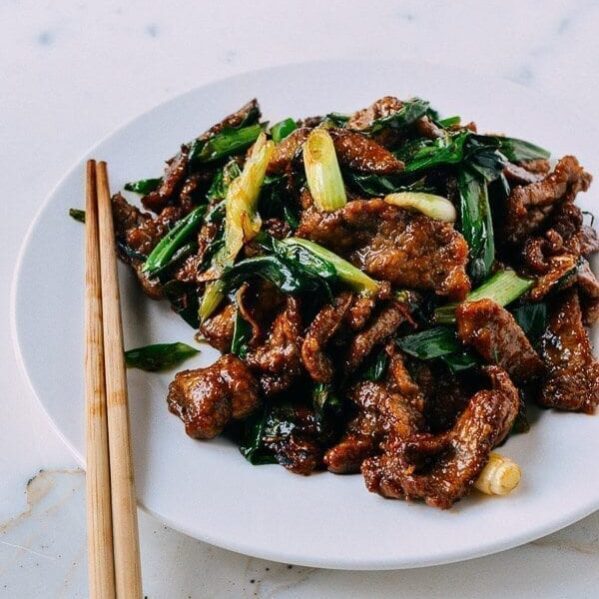
Ingredients
For the beef marinade:
- 1 pound flank steak (450g, sliced thinly against the grain)
- 2 teaspoons oil
- 1 teaspoon soy sauce
- 1 tablespoon cornstarch
For the rest of the dish:
- ½ teaspoon sesame oil
- 2 tablespoons soy sauce
- 2 teaspoons hoisin sauce
- 1 teaspoon hot water
- 1/8 teaspoon white pepper
- 3 tablespoons cornstarch
- 1 tablespoon ginger (finely julienned)
- ¼ cup vegetable or canola oil (60 ml)
- 4-6 scallions (cut into 2-inch lengths, about 4 cups)
- 2 tablespoons Shaoxing wine (divided)
Instructions
- Mix the beef with 2 teaspoons oil, 1 teaspoon soy sauce, and 1 tablespoon cornstarch. Let marinate at room temperature for 30 minutes.
- Combine the sesame oil, soy sauce, hoisin sauce, hot water, and white pepper into a small bowl; mix well and set aside. Spread the beef out on a plate, and sprinkle on 3 tablespoons of cornstarch. Toss to coat the beef lightly, shaking off any excess.
- Heat your wok until just smoking, and spread a quarter cup of oil around the wok. Add the beef and let the beef sear in the oil on one side for 30 seconds. Flip and let sear for another 30 seconds, and transfer to a plate. Turn down the heat to medium low and remove/discard the excess oil (if there is too much) leaving about 2 tablespoons of oil in the wok.
- Add the ginger and let it cook for 15 seconds until it is just caramelized. Turn up the heat to the highest setting, and add the white portions of the scallions. Quickly add 1 tablespoon of Shaoxing wine, while continuing to stir-fry to deglaze the wok.
- Next, add the beef and the rest of the scallions. Stir fry everything together for about 30 seconds, and add the sauce you prepared earlier. Continue to stir-fry. Hopefully your wok is hot enough, and you can get a nice scorch on your scallions (we say this because not all stoves can get up to the same level of BTUs!). Continue to stir-fry until the liquid has evaporated, and all of the sauce is clinging to the beef and scallions (are you drooling yet?). Spread 1 tablespoon of shaoxing wine around the perimeter of the wok. It should be sizzling and evaporate immediately; toss the dish again until the wine is cooked off to generate more wok hay. Turn off the heat, plate and serve!
nutrition facts
